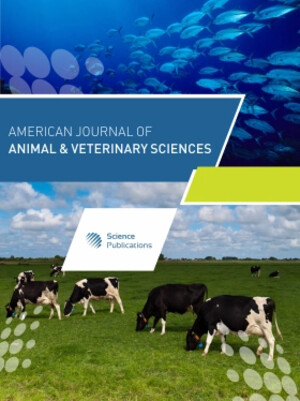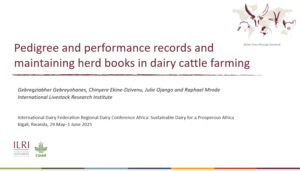
Weight gain and enteric methane production of cattle fed on tropical grasses
Abstract
Context: Planted grasses are becoming an increasingly important feed resource for tropical smallholder ruminant production; yet, limited research has been conducted to quantify productivity or enteric methane (CH4) production of animals consuming these grasses.
Aim: An experiment was conducted to assess yields and nutritional attributes of the following three tropical grasses: Cenchrus purpureus var. Kakamega 1 (Napier), Chloris gayana var. Boma (Rhodes) and Urochloa brizantha var. Xaeres (Brachiaria), and quantify enteric CH4 production of cattle fed on them.
Methods: Yearling Boran steers (n:18; initial liveweight 216 ± 5.8 kg (mean ± s.e.m.) were allocated to one of three grasses, in a completely randomised design and fed ad libitum for two feeding periods, each period lasting for 70 days. Intake, liveweight (LW), apparent total-tract digestibility and enteric CH4 production were assessed. The grasses used were grown on site and biomass yields were monitored over a 2-year period. Animal growth was also simulated to a final weight of 350 kg, and the amount of feed and size of land required to produce, and days to reach final weight, were estimated.
Key results: Mean voluntary dry-matter intake (DMI) and ADG were higher (P < 0.05) in Period 2 than in Period 1, but did not differ among treatments (P > 0.05) within period. Methane yield (MY; CH4 g/DMI kg) was similar among treatments (26.7–28.5, P = 0.26) but Napier had a higher CH4 conversion factor [Ym; CH4 (MJ)/gross energy intake (MJ)] than did Rhodes and Brachiaria (0.0987 vs 0.0873 and 0.0903 respectively; P = 0.013). Our modelling indicated that steers consuming Rhodes took at least 30 more days to reach the target LW, required larger land area for feed production and produced more enteric CH4 than did the other two diets.
Conclusion: Even though animal performance and MY among treatments did not differ, the animals had higher MY and Ym than currently estimated by the Intergovernmental Panel on Climate Change.
Implication: The three grasses supported similar animal growth rate, implying that growing of higher-yielding grasses such as Napier offers an opportunity to optimise land productivity in the tropics. However, suitable feeding practices such as protein supplementation need to be explored to enhance ruminant production and reduce enteric CH4 production.
Citation
Korir, D., Marquardt, S., Eckard, R., Sanchez, A., Dickhoefer, U., Merbold, L., Butterbach-Bahl, K., Jones, C.S., Robertson-Dean, M. and Goopy, J. 2022. Weight gain and enteric methane production of cattle fed on tropical grasses. Animal Production Science










